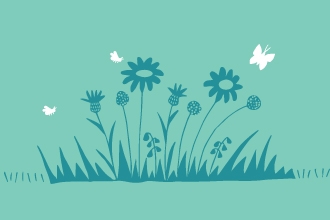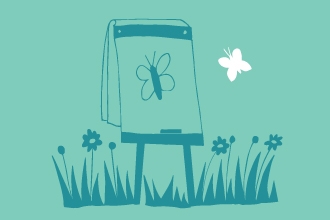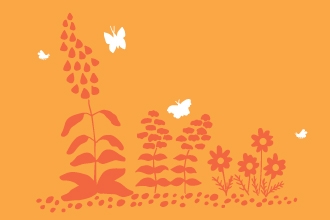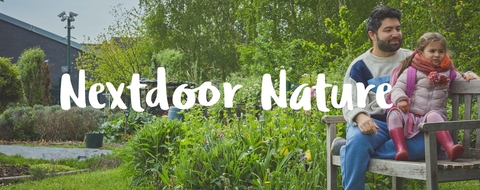
The Wildlife Trusts
What is Nextdoor Nature?
Every one of us can make a difference to bring back nature and tackle climate change, by taking small actions that add up to big changes. Thanks to £5 million funding from The National Lottery Heritage Fund, the Nextdoor Nature programme has been launched across all Wildlife Trusts, to bring nature to the heart of communities across the UK, and leave a lasting natural legacy to mark the Queen's Platinum Jubilee.
In Dorset, the Nextdoor Nature project emerges from the success of Urban Green empowering communities across Bournemouth, Christchurch and Poole, to get involved with transformational micro-projects to help nature thrive and make the places where they live, work and visit greener - so that everyone can benefit.
We will provide the advice and support that people and communities need to take care of the places that matter to them, in ways that are right for them. We are engaging in conversations, inspiring, explaining, but most of all we are listening. Listening to what is important to those communities, what they are interested in now, and what might inspire them further to develop a deeper love for nature. Our overarching remit is simple; to protect nature and increase biodiversity. But it will take time and patience to build resilience, and a positive outlook in a climate of fragility.
Power of Storytelling; Sam Crosby talks about inspiring communities in an urban wildlife haven.
Nextdoor Nature Projects
Nextdoor Nature works alongside communities using a community organising approach but with our main goal of empowering and supporting people to care for and improve places that matter to them. The idea is not to lead events and projects, which is more of a community engagement approach often relying on limited resources, which when taken away leads to diminishing participation.
Poole Town Community Garden
One Nextdoor Nature project being carried out in Dorset's urban setting is the resurrection of the Poole Town Community Garden. Read our blog post to find out how Poole Town Community Garden was resurrected from an urban desert, into a haven for wildlife and the local community.
Poole Town Community Garden (https://www.youtube.com/watch?v=GZEnMXMu1jo)
James Killick and Beata Kapral
Sterte Court Community Garden
Another community project that Nextdoor Nature have been involved with is Sterte Court Community Garden. We worked closely with the community of Sterte Close in Poole, alongside BCP Homes, on this already existing community garden. By chatting to community members, and listening to their wants and needs, we were able to provide support to ensure their vision was fully realised. From mind mapping to bird box building, it has been an absolute pleasure to work with such an enthusiastic and nature-conscious community.
Sterte Court Community Garden (https://youtu.be/iVbHtcPKSy8)
James Killick and Beata Kapral / Sterte Court Community Garden
Trinidad Village and House
Trinidad Village and House are sheltered housing schemes within the Bourne Valley area of Poole. Residents have various levels of need, some with profound mobility and cognitive impairment. Youth and elders live together in small bungalows or flats scattered around plainly landscaped grounds, or within the main, curiously named Village, an Extra Care block of individual flats for the most profoundly in need. There is a communal lounge, an onsite, independently managed café, and various smaller communal rooms within the block. It is quiet in Trinidad Village; the corridors are empty and a stillness pervades the site. Staff here work hard to entice residents into the communal spaces and outside, with planned activities. But it is difficult, noticeably more now than before the pandemic.
Nextdoor Nature was approached by BCP Homes after the success at Poole Town Centre Garden, to help encourage residents into their gardens. We started gently, presenting residents with films about wildlife gardening, encouraging conversations about hedgehogs, birds, slow worms, and butterflies. We brought wildflower seeds and painted ceramic pots, walked around the grounds, and in the background held meetings with estate managers to rewild the grounds and engaged with wellbeing and arts officers. A gardening group, already formed, was reinvigorated with funding by the National Lottery Heritage Fund for plants, compost, empathy, and careful guidance. These are small steps and we are yet to see larger numbers of residents venturing outside and into a garden that has enormous potential for encouraging wildlife as well as therapeutic activity for the people who live nearby.
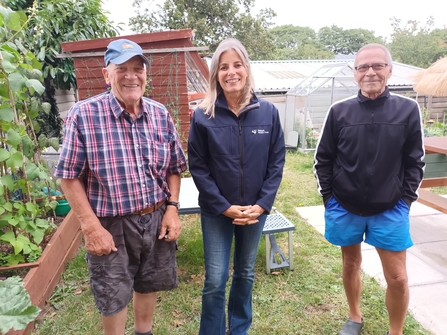
Dorset Wildlife Trust / Anona visiting Trinidad village
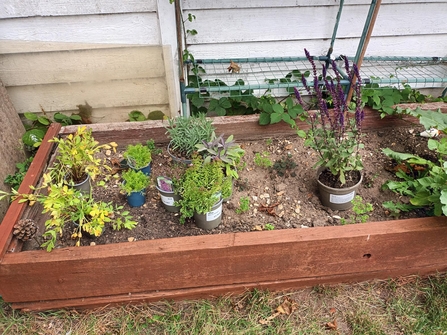
Anona Dawson / Trinidad Village garden
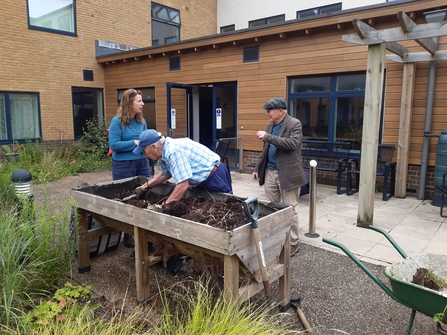
Anona Dawson / Trinidad Village garden
BH15 Grow Together
A few neighbours near Poole Quay came together and created a thriving garden on a roadside verge. Their idea was to create a friendly communal space to grow fruit and vegetables, to make a space for nature, and for people to connect to each other. The garden has been supported by Nextdoor Nature, but cared for and loved by the community. Passers by, on their way to the Town Centre, stop and admire the wildflowers. They are encouraged to pick fruit and vegetables or to sit and gaze at butterflies and listen to bees and other insects which have also found this wilder space in an urban setting.
Nextdoor Nature: BH15 Grow Together (https://youtu.be/G53uokrd_ig )
James Killick and Harry Dyke / BH15 Grow Together
Get2Gethers
The Turlin Moor Community Map project started last September with Nextdoor Nature seeing an opportunity to work alongside an established textile craft group involving prominent elders and younger women within the community. An idea from Common Ground’s parish map projects carried out in the 1980’s was taken to the group. Parish maps were visual expressions of a community’s feelings about the place they live in. These textile maps gave understanding to the observer of what the community thought important, showing their local distinctiveness.
The project has become a catalyst for talking about nature, what is important to people who live on the Moor and whether it should be represented on the map. The remit given was to be brave, there are no restrictions and to show everything of meaning to you.
Turlin Moor has been marginalized for decades with stories of vandalism, drug use, knife and gun crime and theft. One road in and one road out. But who would have thought that someone in the group living on the Moor for over 40 years remembers a deer charging down the main road, others talk of seeing clouds of butterflies on the open fields. They mention the Baccies, the name given by fishermen to the backwaters on Lytchett Bay, part of our reserve. They like that the sea is close and there is space to walk on its shores.
This project is evolving slowly, conversations weave amongst the fabric, felt and glue stitched together by a group of women sharing a common ground.
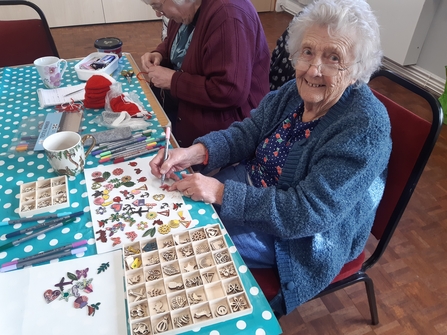
Anona Dawson
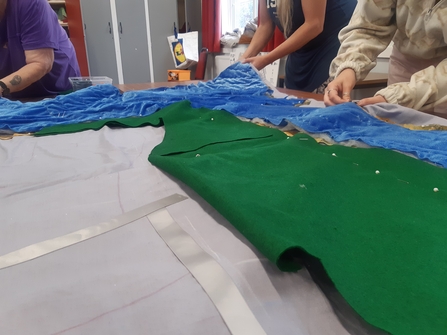
Anona Dawson
Working with Bournemouth and Poole College
Turlin Moor sits on the edge of Lytchett Bay, an internationally important area of marsh and wetland habitat which attracts rare overwintering birds, sand lizards, Dartford and reed warbler and the evocative sounding nightjar. Our own Lytchett Bay nature reserve includes part of the shoreline serving the fishing and boating community of Turlin Moor. This provided the perfect backdrop for a film made by Bournemouth and Poole College students alongside Nextdoor Nature, demonstrating how valuable and successful collaborative partnership working is. The film project involved a team of over 40 people, representing the Turlin Moor community, The College, Bournemouth Christchurch and Poole Homes, and Birds and Recreation Initiative, and demonstrated how a single idea from the Nextdoor Nature project can bring together local elders and teenagers from the community and sow the seed for a greater awareness of their own environment and the importance of its protection.
Linking up with The Wildlife Trusts for Nextdoor Nature reminded me that nature is all around us – it is us. Let’s stay tapped in with the natural world.
Nextdoor Nature projects could include:
- Empowering people to create wilder, green places on their doorsteps, helping nature to thrive
- Helping young people to develop the skills they need to act as environmental champions in their local areas
- Supporting communities with initiatives to improve the green spaces where they live
Do you want to make space for nature in your neighbourhood?
Tell us about your idea and let us know how we can help. Call us on 01305 264620 or send us an email.
Or, complete and return the Nextdoor Nature Community Application Form.
Download the Community Application Form
Alternatively, send us a video or photos, or upload your video to YouTube and send us the link.

Can't wait to get started?
Here are a few ideas that you can get on with right away! For a beautiful wildlife-friendly, happy street, why not get your neighbours involved too.

